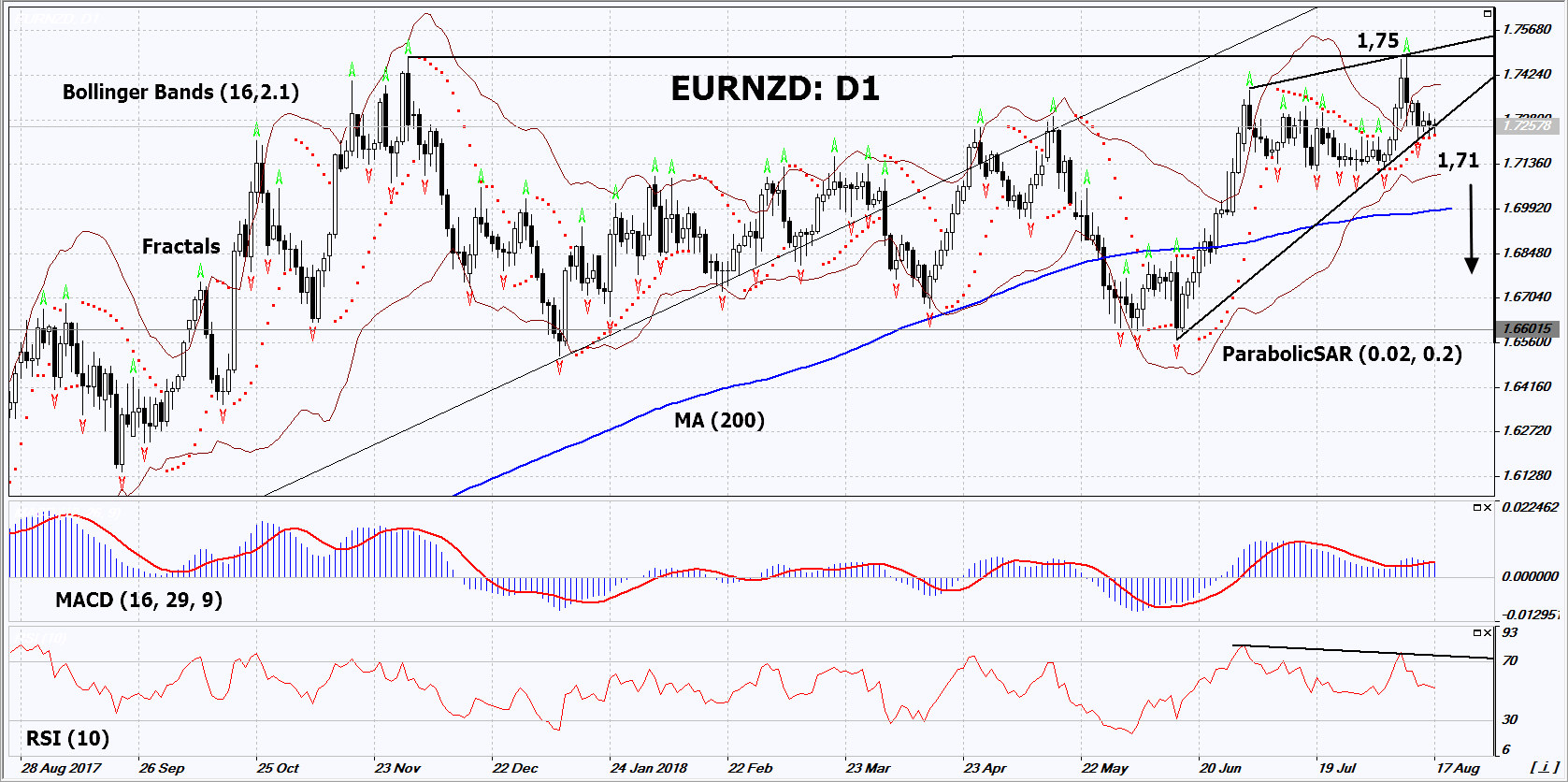By IFCMarkets
Negotiations between the US and China can affect market dynamics
In this review, we suggest considering the euro against the New Zealand dollar currency pair. Is there a possibility for the EURNZD prices to fall? Such dynamics are observed in case of the weakening of the euro and strengthening of the New Zealand dollar.
Inflation in the Eurozone in July of the current year amounted to 2.1% year over year. This is higher than the 2% target level of the European Central Bank. Nevertheless, the ECB is not going to raise the rate (0%) in the next 12 months, as well as to abandon the program of quantitative easing in the amount of 2.6 trillion euros. Along with global trade wars and the currency crisis in Turkey and a number of other developing countries, this may contribute to the weakening of the single European currency. A number of large European banks, such as BBVA, UniCredit, BNP Paribas, ING and HSBC, have a significant amount of Turkish assets. In turn, the New Zealand dollar can correct up from its low for 2 and a half years in case of successful negotiations between the US and China, which will take place before the end of August. They are able to revitalize international trade. In addition, on Thursday, the trade balance for July will come out in New Zealand.

On the daily timeframe, EURNZD: D1 could not overcome the 8-month and 3-year high. Now it is trying to correct down. The results of trade negotiations between the US and China, and data on foreign trade for July in New Zealand can contribute to the further price decrease.
- The Parabolic indicator gives a bullish signal. It can be used as an additional support level, which must be overcome before opening a buy position.
- The Bollinger bands have widened, which indicates high volatility.
- The RSI indicator is above 50. It has formed a negative divergence.
- The MACD indicator gives bearish signals.
The bearish momentum may develop in case EURNZD falls below its last fractal low, the lower Bollinger band and the Parabolic signal at 1.71. This level may serve as an entry point. The initial stop loss may be placed above the last fractal high and the high for 8 months and for 3 years at 1.75. After opening the pending order, we shall move the stop to the next fractal high following the Bollinger and Parabolic signals. Thus, we are changing the potential profit/loss to the breakeven point. More risk-averse traders may switch to the 4-hour chart after the trade and place there a stop loss moving it in the direction of the trade. If the price meets the stop level (1.75) without reaching the order (1.71), we recommend to close the position: the market sustains internal changes that were not taken into account.
Summary of technical analysis
| Position | Sell |
| Sell stop | Below 1,71 |
| Stop loss | Above 1,75 |
Market Analysis provided by IFCMarkets
Free Reports:
 Get Our Free Metatrader 4 Indicators - Put Our Free MetaTrader 4 Custom Indicators on your charts when you join our Weekly Newsletter
Get Our Free Metatrader 4 Indicators - Put Our Free MetaTrader 4 Custom Indicators on your charts when you join our Weekly Newsletter
 Get our Weekly Commitment of Traders Reports - See where the biggest traders (Hedge Funds and Commercial Hedgers) are positioned in the futures markets on a weekly basis.
Get our Weekly Commitment of Traders Reports - See where the biggest traders (Hedge Funds and Commercial Hedgers) are positioned in the futures markets on a weekly basis.